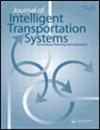Deep survival analysis model for incident clearance time prediction
IF 2.8
3区 工程技术
Q3 TRANSPORTATION
Journal of Intelligent Transportation Systems
Pub Date : 2025-05-04
DOI:10.1080/15472450.2024.2315126
引用次数: 0
Abstract
Incident clearance time prediction is a key task for traffic incident management. A hazard-based duration model is a prevalent approach for predicting and analyzing the incident clearance time, which considers “duration dependence” of which the probability of an incident clearance ending depends on the time the clearance has lasted. However, the performance is limited due to its model assumptions for clearance time distribution, linear relationship, and the time-invariant effects of influential factors. This study proposes a deep survival analysis model that relaxes the assumptions of the hazard-based duration model while considering duration dependence based on a multi-task deep neural network (MTDNN). The MTDNN can consider the duration dependence when predicting incident clearance time by simultaneously estimating the survival function based on the concept of multi-task learning. The effects of influential factors on the prediction of MTDNN are also investigated using a post-analysis method. The proposed model is evaluated by its predictive performance and the estimated effects of influential factors using the freeway incident data collected in Korea from 2014 to 2019. These evaluations show that, compared to the baseline hazard-based duration model, the proposed MTDNN improves the predictive performance by 29.7% in terms of mean absolute percent error, and outperforms all statistical and machine learning models for both incident clearance time prediction and the survival function estimation. The analysis of the influential factors reveals that the hazard-based duration model and MTDNN had major influencing factors in common, but the impact of some factors is considerably different.
用于事故清理时间预测的深度生存分析模型
事故清理时间预测是交通事故管理的一项关键任务。基于危险的持续时间模型是预测和分析事故清理时间的一种常用方法,它可以预测和分析事故清理时间。
本文章由计算机程序翻译,如有差异,请以英文原文为准。
求助全文
约1分钟内获得全文
求助全文
来源期刊
CiteScore
8.80
自引率
19.40%
发文量
51
审稿时长
15 months
期刊介绍:
The Journal of Intelligent Transportation Systems is devoted to scholarly research on the development, planning, management, operation and evaluation of intelligent transportation systems. Intelligent transportation systems are innovative solutions that address contemporary transportation problems. They are characterized by information, dynamic feedback and automation that allow people and goods to move efficiently. They encompass the full scope of information technologies used in transportation, including control, computation and communication, as well as the algorithms, databases, models and human interfaces. The emergence of these technologies as a new pathway for transportation is relatively new.
The Journal of Intelligent Transportation Systems is especially interested in research that leads to improved planning and operation of the transportation system through the application of new technologies. The journal is particularly interested in research that adds to the scientific understanding of the impacts that intelligent transportation systems can have on accessibility, congestion, pollution, safety, security, noise, and energy and resource consumption.
The journal is inter-disciplinary, and accepts work from fields of engineering, economics, planning, policy, business and management, as well as any other disciplines that contribute to the scientific understanding of intelligent transportation systems. The journal is also multi-modal, and accepts work on intelligent transportation for all forms of ground, air and water transportation. Example topics include the role of information systems in transportation, traffic flow and control, vehicle control, routing and scheduling, traveler response to dynamic information, planning for ITS innovations, evaluations of ITS field operational tests, ITS deployment experiences, automated highway systems, vehicle control systems, diffusion of ITS, and tools/software for analysis of ITS.

 求助内容:
求助内容: 应助结果提醒方式:
应助结果提醒方式:


